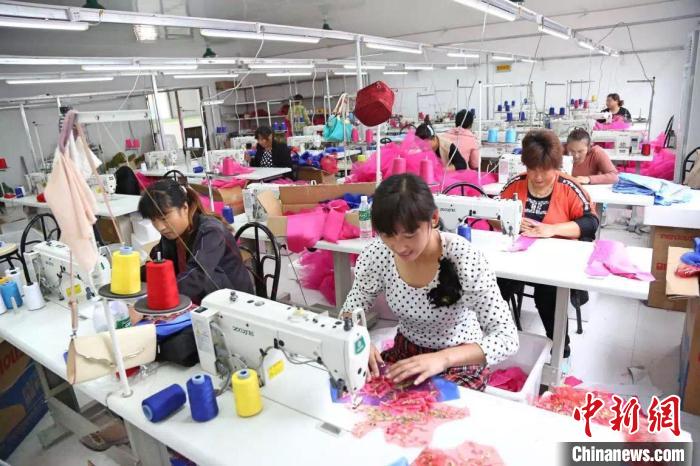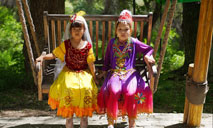Chinese counties bring GDP to over 100 billion yuan by developing characteristic industries
Last year Shuyang, a county in the northern part of east China’s Jiangsu province, broke the 100 billion yuan ($15.64 billion) mark for the first time with its GDP, turning the textile and clothing, equipment manufacturing and electronic information industries into a strong engine for economic growth.

A hanfu factory in Caoxian county, east China's Shandong province. (Photo courtesy of the publicity department of the CPC Caoxian county committee)
A report by leading Chinese think tank CCID Consulting indicated that in 2020, the GDP of 38 Chinese counties reached 100 billion yuan. Among them, 16 were from Jiangsu, nine from Zhejiang, four from Fujian, three from Hunan, and one from Shandong, Guizhou, Hebei, Jiangxi and Shaanxi province.
These counties strove to cultivate their own distinctive industries, said Wei Houkai, head of the Rural Development Institute at the Chinese Academy of Social Sciences, explaining why the counties have stood out.
Jinjiang, a county-level city in east China’s Fujian province, is a famous production base of bathing suits. Last year, its GDP reached 261.6 billion yuan, with the output value of the bathing suit industry standing at 34 billion yuan.
“The bath clothing industry has a complete industrial chain ranging from yarn spinning, fabric producing, dyeing and finishing to clothing manufacturing, involving more than 500 companies,” said Shi Fangfang, deputy secretary-general of the bathing suit association in Jinjiang.
Jinjiang’s bathing suit industry registered an annual growth output value of 15 percent in recent years, representing a total industrial output value that is 16 percentage points higher than the average of the national textile industry.
Caoxian county in east China’s Shandong province gained fame as a production base of Hanfu, traditional clothing of the Han ethnic group. Home to more than 600 Hanfu manufacturers, Caoxian takes up one third of the sales volume of Hanfu nationwide and has nurtured the country’s largest market of theatrical costumes.
Anji, in east China’s Zhejiang province, is also a member of the “100 billion yuan club.” Known as the “bamboo hometown” in China, Anji tops the country in terms of the number of bamboo trees planted, the annual production volume of bamboo for sale, the annual value of production of bamboo, the annual export volume of bamboo and the comprehensive economic strength of the bamboo industry.
“Building industrial clusters has become an experience shared by the counties with stronger economic strength,” said Ma Cheng’en, director of CCID Consulting County Economic Research Center, adding that most of the “100 billion yuan” counties have taken the second industry as a mainstay, with more than 20 out of the 38 counties seeing half of their GDP coming from the second industry.
As its GDP reached 136.4 billion yuan last year, Huairen is the only county in Guizhou with a GDP of more than 100 billion yuan. With the wine industry as the pillar industry, Huairen has established travel itineraries that involve rich red tourism resources and wine culture.
For these counties to go further and do better, Ma suggested they make full use of new technologies available to develop characteristic industries and create new driving forces for economic growth. He also pointed out the counties in central and western China will embrace promising prospects as long as they make breakthroughs in developing industries.
Photos
Copyright © 2021 People's Daily Online. All Rights Reserved.










